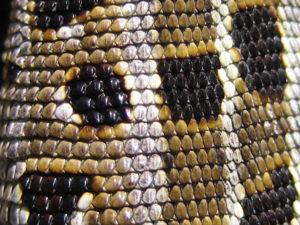|
|
| (23 intermediate revisions by 2 users not shown) |
| Line 1: |
Line 1: |
| − | {{review}} | + | {{unfinished}} |
| − | [[Image:Lizard_closeup.jpg|300px|thumb|right|'''The scaly appearance of lizard skin''' (© Baccharus, Wikimedia Commons)]] | + | [[Image:The_skin_of_a_lizard.jpg|300px|thumb|right|'''The scaly appearance of the skin of the lizard''' (''Lacerta agilis'') (© RVC and its licensors. All rights reserved)]] |
| | | | |
| − | Lizards have relatively thick skin with ectodermal scales formed by folding of the epidermis and outer dermal layers. Lizards undergo regular periods of [[Lizard Shedding|shedding]] (ecdysis) during which the skin comes off in large patches. Frequency depends on the species, temperature, humidity, state of [[Reptile Diet Composition|nutrition]], and rate of growth. Presence of wounds or skin infections maybe increase the frequency of shed cycles.
| + | Many lizards have quite thick skin while others, such as geckos, have soft, vulnerable skin. The skin undergoes '''ecdysis''' and comes off in a patchwork fashion. |
| | | | |
| − | *Lizards such as geckos have soft, vulnerable skin.
| + | Dewlaps, spines, crests and horns are generally more developed in male lizards. |
| − | *[[Gila Monster|Gila monsters]], [[Mexican Beaded Lizard|beaded lizards]], some skinks, legless lizards, and girdle-tailed lizards have osteoderms, or dermal bony plates, usually confined to the back and sides.
| |
| − | *Secondary sex characteristics such as dewlaps, spines, [[Crest|crests]] and horns are generally more developed in male lizards.
| |
| − | *Spines can also serve a protective role in [[Bearded Dragon|bearded dragons]], horned lizards and the moloch (''Moloch horridus'').
| |
| − | *Claws are usually large and well developed with sharp points in large species like iguanas and [[Monitor|monitors]]. They can be trimmed regularly to prevent scratches and nails should be trimmed prior to a [[Lizard Physical Examination|physical examination]].
| |
| | | | |
| − | A lateral skin fold between the fore and hind limbs provides a convenient site for the subcutaneous [[Lizard Injection|injection]] of fluid.
| + | Chromatophores are responsible for the change of skin colour in species capable of it. |
| | | | |
| − | ==Colour==
| + | A lateral skin fold between the fore and hind limbs provides a convenient site for the subcutaneous injection of fluid. |
| − | | |
| − | In species that have rapid colour changes (''Chamaeleo'' spp. and ''Anolis'' spp.), cells called [[Chromatophore|chromatophores]] are abundant and under hormonal or neurologic control (or sometimes both). [[Chromatophore|Chromatophores]] are pigmented cells, located just beneath the basal lamina, that may react to stimulation from light or changes in temperature.
| |
| − | | |
| − | Also see: <big><b>[[Integument of Exotic Species - Anatomy & Physiology#Reptiles|Reptile Skin]]</b></big>
| |
| − | | |
| − | ==Literature Search==
| |
| − | [[File:CABI logo.jpg|left|90px]]
| |
| − | | |
| − | | |
| − | Use these links to find recent scientific publications via CAB Abstracts (log in required unless accessing from a subscribing organisation).
| |
| − | <br><br><br>
| |
| − | [http://www.cabi.org/cabdirect/FullTextPDF/2009/20093355673.pdf '''Reptilian dermatology.''' Wyneken, J.; Mader, D.; Baer, C. K.; Association of Reptilian and Amphibian Veterinarians, Chester Heights, USA, Proceedings of the Association of Reptilian and Amphibian Veterinarians, 16th Annual Conference, Milwaukee, Wisconsin, USA, 8-15 August, 2009, 2009, pp 83-87 - '''Full Text Article''']
| |
| − | | |
| − | ==References==
| |
| − | | |
| − | * Mader, D.R. (2005). ''Reptile Medicine and Surgery''. Saunders. pp. 1264. ISBN 072169327X
| |
| − | [[Category:Lizard_Anatomy|I]]
| |

The scaly appearance of the skin of the lizard (
Lacerta agilis) (© RVC and its licensors. All rights reserved)
Many lizards have quite thick skin while others, such as geckos, have soft, vulnerable skin. The skin undergoes ecdysis and comes off in a patchwork fashion.
Dewlaps, spines, crests and horns are generally more developed in male lizards.
Chromatophores are responsible for the change of skin colour in species capable of it.
A lateral skin fold between the fore and hind limbs provides a convenient site for the subcutaneous injection of fluid.
